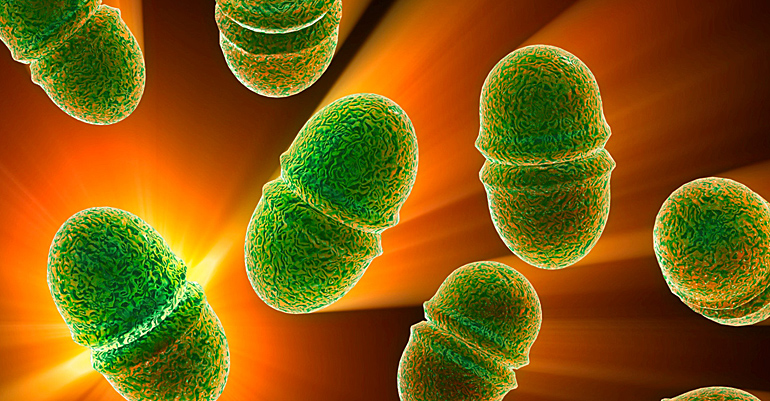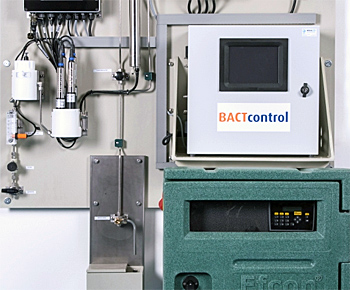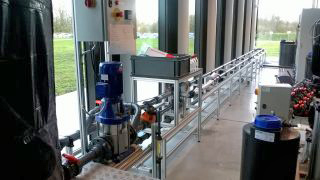KWR and MicroLAN to develop rapid detection method for enterococci bacteria in drinking water
 Researchers from KWR water recycle institute, MicroLAN, water company Vitens and Het Waterlaboratorium started a study on the adoption of the BACTcontrol monitoring device for almost real time measurement of low concentrations of enterococci bacteria in drinking and surface water.
Researchers from KWR water recycle institute, MicroLAN, water company Vitens and Het Waterlaboratorium started a study on the adoption of the BACTcontrol monitoring device for almost real time measurement of low concentrations of enterococci bacteria in drinking and surface water.
MicroLAN's BACTcontrol already measures E.coli. Regulations however often requires the measuring of both E.coli and enterococci bacteria as the two main microbial parameters for the monitoring of drinking and bathing water quality.
These methods however take one or two days to produce a result. Especially for detection of faecal contamination drinking water companies need faster methods.
The joint study is part of a project by Dutch consortium TKI Water technology that draws on knowledge institutes, industry and water authorities to develop new water technologies.
 Current BACTControl device for rapide measurement of E.coli.
Current BACTControl device for rapide measurement of E.coli.
Faecal contamination
Contamination with faecal microorganisms is the principal water-related health threat worldwide.
This is why the main microbial parameters for the monitoring of drinking and bathing water quality are Escherichia coli (E. coli) and enterococci (see top photo), two species of microorganisms that occur in large amounts in faeces.
Regulations today require that drinking and bathing water be analysed for the presence of E. coli and enterococci using culture methods.
A more rapidly detection of contaminations resulting from pipe fractures or work on the network, allows water supply companies to react immediately.
Moreover, fast detection methods could be used to monitor the effectiveness of management measures in the event of contamination incidents, and to determine more rapidly whether surface and bathing water is safe for recreation.
Rapid E. coli and enterococci detection
The rapid detection of E.coli by MicroLAN's BACTcontrol is based on the detection of ß-D-glucuronidase enzyme. At the moment it is already possible to make a reliable measurement in 2.5 to 4 hours. A new version, which only takes 1 to 2 hours to produce a result, will soon be available on the market.
The researchers use this new version to be adapted for the detection of enterococci which also contain the ß-D-glucosidase enzyme.
 Further research required
Further research required
On lab scale the adapated version showed producible results when applied to surface water samples and to drinking water, to which the diluted ß-D-glucosidase enzyme has been added.
Because the method is still subject to interference from the water matrix, particularly at low (under 10 kve) concentrations of enterococci, the results are not solid enough for its immediate, reliable application in practice.
This requires further research into the effects of the water matrix.
This news item was originally published on the websites of MircoLAN and KWR.
Read aso on this website
● Optiqua deploys 80 EventLab water quality sensors for Vitens smart supply network, the Netherlands, 4 May 2016
● LG Sonic and American Water announce innovative partnership to monitor and control algal blooms, 28 April 2015
● KWR and Naturalis to study eDNA for monitoring aquatic biodiversity, 23 April 2015
● MicroLAN takes over mbOnline to extend range of fresh water quality monitoring systems, 20 February 2014
● BlueLeg Monitor measures harmful algae in Gulf of Oman with WISP hand held device, 19 August 2013
More information
TKI Water technology
Utrecht, the Netherlands
www.tkiwatertechnologie.nl (Dutch only)
KWR Watercycle Research Institute
Nieuwegein, the Netherlands
+31 30 606 9511
www.kwrwater.nl/en
MicroLAN
Waalwijk, the Netherlands
+ 31 416 34 80 90
www.microlan.nl



